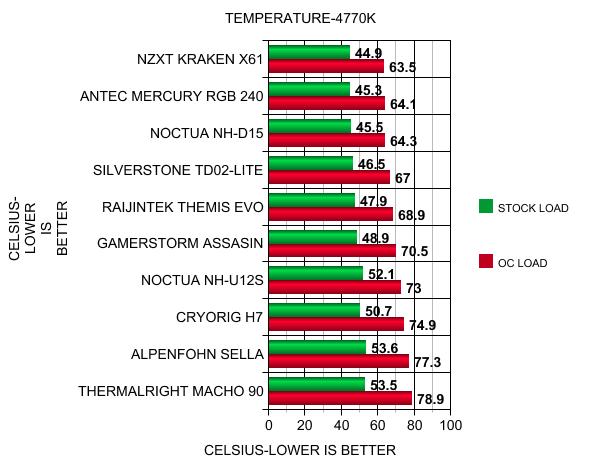-
Antec Mercury RGB 240
Introduction
It seems like every product we now look at features some kind of multi coloured LEDs designed to light up your case like Blackpool sea front but, in true style. The latest all-in-one CPU cooler that we're looking at today is the Antec Mercury RGB 240. The name is quite a mouthful, granted, but it explains everything you need to know about the product in one fowl swoop. Promising big performance, comprehensive RGB lighting customisation, and much more, the Mercury RGB 240 looks set to be the new premium choice for AIO cooling. Can it deliver the performance we would expect? Let's find out!

Specifications.


Packaging & Contents
The Antec Mercury RGB 240 ships in a dark box with blue and white accents.In addition to a large product image you can see some features.

The back reveals the technical details in numerous languages.

Inside, the hardware does come in labelled bags. Antec includes all mounting hardware and accessories necessary to setup and run the cooler in your system, including mounting hardware and screws. Inside, there is also an instructions booklet which I found easy to use, as well a tube of thermal paste.

Various cables for the RGB mode. A manual controller is provided for the lighting effects if your motherboard doesn't support synchronization.



A Closer Look
Once unpacked the Antec Mercury RGB 240, we have an all-in-one kit with a quite original design in terms of base-pump, although classic in terms of tubes and radiator.

The radiator offers dimensions of 274 x 119 x 27 mm, so it requires a chassis with support for radiators of 240 mm.

The radiator, made entirely of aluminum with the logo of antec on one of the ends which gives a pretty elegant touch. The radiator features an arrangement of high-density 16 FPI (fins per inch).

Ideally spaced at 2.8 mm, the fins allow for cool air to pass through efficiently.

The hoses have been given an upgrade too, they look much thicker than previous models, with some of the nicest weave braiding I’ve ever seen on an AIO.

The heat shrink-wrap on the fittings also looks more durable and the whole thing just looks more robust in general. They are flexible and we can accommodate them in the position that we like the most.

The pump/waterblock is quite hefty and features a relatively innocuous Antec logo in the middle. The white top-plate is where the temperature-reactive LED will shine through. It also happen to feature LED lights which can change their colour according to the temperature of the CPU.

Blue = <48c
Green= 49c-60c
Red = 60c<
This not only gives a touch of color to our configuration, but it is also very useful if we have the tower next door and we do not have a motorization program.

In one of its sides we find the mini-USB connector to feed it.We will have to connect it to a SATA power or a three-pin connector.

The brushed copper base that will help the heat dissipate more quickly. Antec have also improved the installation by pre-applying the thermal compound.

The Antec Mercury RGB 240 has, as its name suggests, with two 120 mm fans to cool the radiator. They come with a milky white ring on the top and get powered by four pin connections. Then, when the fans speed up to their maximum of 1750 RPM the white ring will turn blue with LEDs that will react to the speed the fans are operating at. There are a lot of LEDs with different colours in the white, translucent ring around the edge of the blades. With these fans Antec is adding another cool looking LED enabled product in their lineup.

They are generating a sound of low decibels. This is, in part, thanks to the antivibration system mounted by each of the fans and the graphite bearings, which generates less friction and vibration when working at maximum performance.

Installation Process
Installing the Mercury RGB 240 is very simple. Start by positioning the backplate on the motherboard and use the screw pillars to hold it in place.


Now, apply some thermal paste in preparation for mounting the pump.

Position the pump and slide the bracket over the screw pillars. Then, using the included thumbscrews, tighten the pump down onto the CPU. With that done, connect the pump to the motherboard to then install the fans and connect them to the radiator. Even with large heatshink rams installed there's still plenty of clearance between the rams and the pump.

No text needed, just feast your eyes on what’s below.






Test System & Methology
Test System:
Cpu:Intel Core i7-4770K,OC@4.2GHz
Motherboard:ASUS Maximus VI Gene Z87
Memory: 16GB Mushkin
Graphics Card: Sapphire HD 6970
Power Supply: Antec HCG 750W
Boot Drive: Ocz Vector
Storage Drive: 3TB Seagate Barracuda
Boot Drive: Ocz Vector
Chassis: Dimastech Bench Table Easy V2.5

Software:
AIDA64
CPUID HW Monitor 1.23
CPUID CPU-Z 1.65
Prime95-FPU
I am testing the performance as follows:
Ambient temperatures are kept at 23C throughout my tests.
The CPU Fan is set to 100% to eliminate inconsistencies as a result of PWM control.
Idle temperatures are obtained after booting the PC and idling on the desktop for 30 minutes.
Load temperatures are obtained after running Prime95′s test for 15 minutes.
Temperature
Stock performance on this cooler was far better than I expected, which is obviously a good thing. Even when overclocked, our load temps are incredibly low here, but it’s the overclocking performance that we’re really happy with.

Noise Level
Even with two fans, we found the cooler to be very agreeable in terms of acoustics. It’s on par with many high-end silence focused coolers and many dual fan designs. When overclocked, the acoustics crept up a bit, but no more so than any other 240mm radiator design.

Conclusion
When it comes to the Mercury RGB 240, there is much to like. The quality of construction of the Mercury RGB 240 is undoubtedly very good, Antec clearly did a good job of producing this cooler. The black design will make this kit match up nicely in any PC. The system has pump lighting depending on the system temperature. The hoses have been given an upgrade too, they look much thicker than previous model, with some of the nicest weave braiding I’ve ever seen on an AIO. The only niggle we have is the lack of software control. It's one of the most easy and comfortable kits on the market to use and install. Antec have also improved the installation by pre-applying the thermal compound. We like the simplicity, only one wire goes from the water-block to the motherboard, and then the fan just needs a FAN header on the mobo as well. The Antec Mercury RGB 240 is ready for overclocking duties, thanks to a 240mm radiator and two 120mm PWM fans. Now in most instances, you have to sacrifice a good bit of sound to get this level of performance but that simply isn't the case with the Mercury RGB 240. You can have your cake and eat it too. You can have the highest level of performance in a package that won't disturb much anyone or anything in earshot. Simply amazing!

Overall, I am impressed by what Antec offers with the Mercury RGB 240. The RGB lighting on the fans, as well as the pump, looks fantastic. Those planning to build or use AMD Ryzen systems are also in luck as the Mercury RGB 240 supports socket AM4 out of box. Finally, the 5-year warranty, while not industry leading, is still awesome. The cooling market is very competitive and there’s no shortage of great AIO coolers to choose from these days. However, Antec have a great product here with competitive performance and a very competitive price(€100).

Last edited by testman78; 09-11-2019 at 02:23 AM.
 Posting Permissions
Posting Permissions
- You may not post new threads
- You may not post replies
- You may not post attachments
- You may not edit your posts
-
Forum Rules








































 Reply With Quote
Reply With Quote

Bookmarks